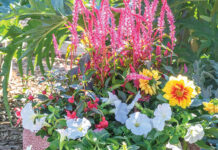
As record setting cold, snow, and ice blanket much of the U.S., some are finding themselves going days without power or even clean water. According to The Weather Channel, 73% of the U.S. is currently covered in snow, the most widespread coverage in 17 years. Car accidents, emergency rescues, and even tornadoes in the past few days have added to the crises. In Texas, residents are reporting devastating effects on their beloved plantings and landscapes as temperatures plummet well below typical USDA Zone standards.
Plowing Windfall
In areas where such weather extremes are common, it’s been a financial windfall—though a sleepless one—for landscapers who perform plowing. On www.expired-link.com, a sister site of Turf, one participant from northern Kentucky wrote, “At least we get to make up for lost time (last season). We’re going to plow more this year than the three previous seasons.”
But running out of salt is becoming an issue for some in Ohio. One www.expired-link.com member from Westerville commented, “Very concerned on salt. I think I have enough for week but everyone is selling out of bagged salt, and several places said they won’t get any more this season.” Another added, “It’s dry where I live. Nobody has ice melt.”
Texas Devastation
Meanwhile, Texas has been among the states hardest hit by two deadly back-to-back storms. Freezing pipes, empty store shelves, and 11 weather-related deaths were among the reports. As of this writing, 408,000 homes and businesses in Texas remain without power and seven million Texans are under “boil water” notices, according to The Weather Channel.

To get an idea of the impact on Texan landscapes, Turf reached out to members of the Texas Gardening & Landscape Forum on Facebook. Their reports were heartrending of broken trees, greenhouses without heat, lost ornamentals, and pool damage. Fig trees, gardenias, jatropa, powder puffs, oleanders, palm trees, succulents, pineapple guava, arroyo sweetwood, flowering senna, and esperanzas were all varieties attempting to be weather proofed and saved. More than one member commented on “losing almost everything.”
“I’ve got 500 damaged or destroyed trees, all my pipes have burst, and sprinkler heads have popped out of the ground. It was 29˚ inside my home yesterday after eight days without power. It’s too soon to know about shrubs and other perennials,” reported one member.
Other members across Texas echoed the sentiments. Here are their accounts: “I have lost almost everything. I had tarps on in-ground plants and most of my special plants were in the shed with a heater…. but the power went out for 38 hours during the coldest nights (in the teens). We usually don’t get temps this cold. The coldest is usually a day in the upper 20’s, and for just a couple of hours. I have been gardening for 15 years and will have to start over now. It’s a very sad week for this Houston gardener.”

“Everything is still covered with tarps and snow. I’m scared to see what is left this weekend when it warms up. I have never seen it this cold for this long in this part of Texas,” reported one resident of Spring, TX.
As to turf damage, it could still be anyone’s guess. “We mostly have St. Augustine and it will be okay. I don’t know about Bermuda, but I believe it will be fine. I don’t know anything about zoysia,” said one resident. Another added, “Right now my grassy areas are a slushy mess. I have to walk very gingerly not to tear them up. I’m wondering if I should’ve just left the lawn and not mowed all winter.”
Yet despite the damage, warmer weather is expected in many areas. Houston could even see a high of 63˚ by Sunday, according to The Weather Channel. And plants can prove amazingly resilient. One person wrote, “The storm cracked the cherry laurel, and yet nature will persevere and much will grow back that is native. The rest can start from seed or a local garden when we are able to obtain. I hope local garden stores could keep things warm.”











![[VIDEO] Dickies®: Discover Workwear That’s Anything But Uniform](https://turfmagazine.com/wp-content/uploads/2023/06/1647663814-4b1a2a7742790a9b1e97a3b963477850192e1d6a9dfba9b07214a77bae25d6e3-d-218x150.jpg)






























![[VIDEO] Dickies®: Discover Workwear That’s Anything But Uniform](https://turfmagazine.com/wp-content/uploads/2023/06/1647663814-4b1a2a7742790a9b1e97a3b963477850192e1d6a9dfba9b07214a77bae25d6e3-d-324x160.jpg)